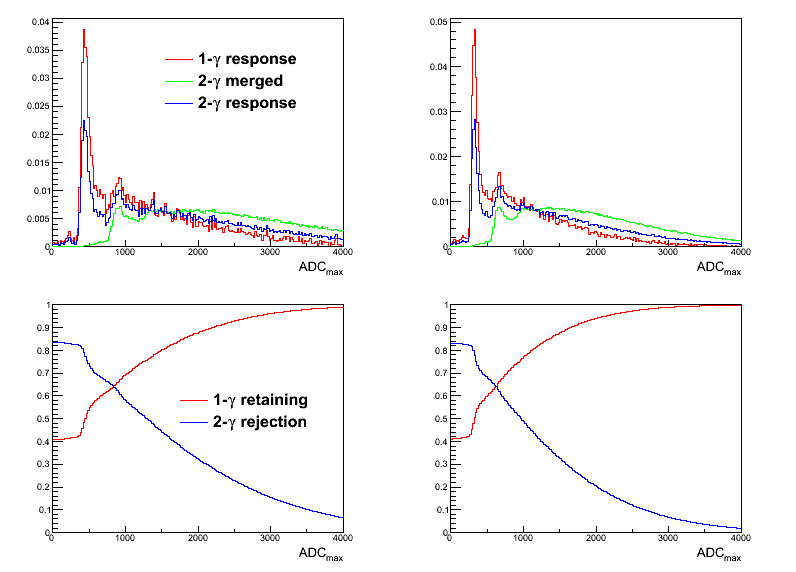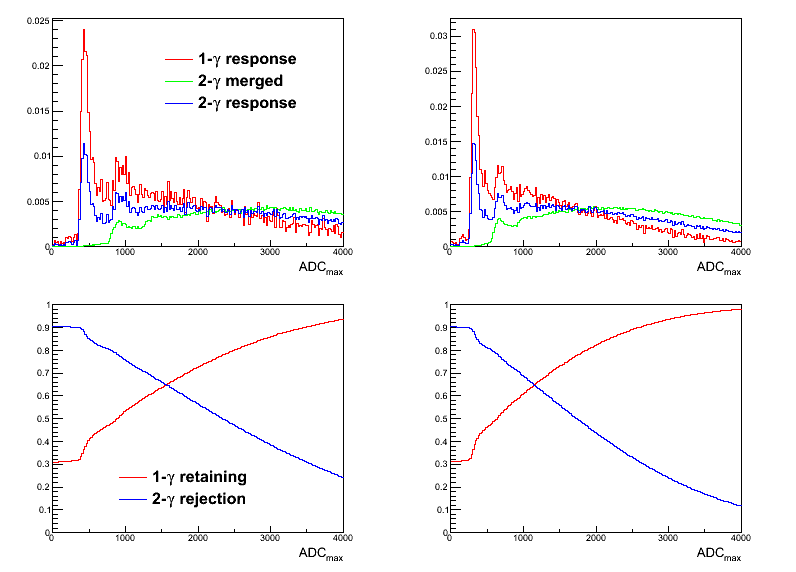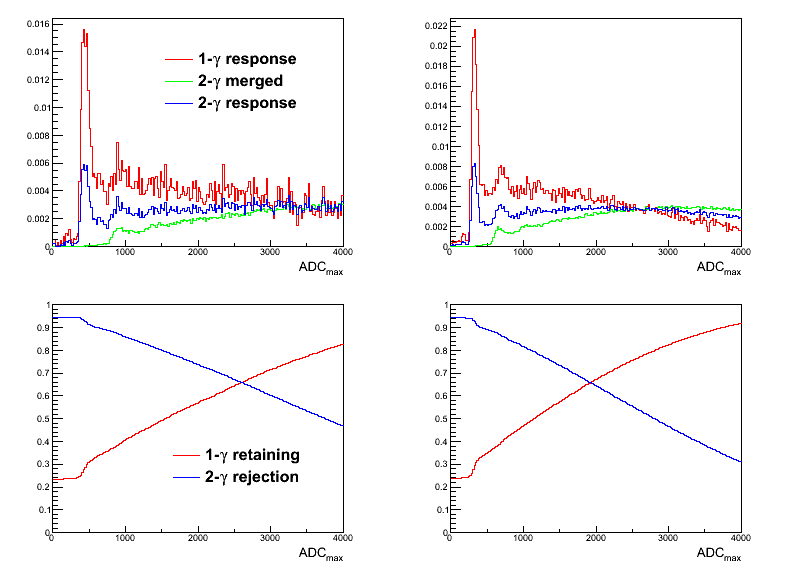- oleg's home page
- Posts
- 2024
- 2023
- February (1)
- 2022
- 2021
- 2020
- 2019
- 2018
- 2017
- 2016
- December (2)
- November (1)
- October (2)
- August (1)
- July (1)
- June (3)
- May (2)
- April (3)
- March (4)
- January (1)
- 2015
- 2014
- December (2)
- October (2)
- September (1)
- August (1)
- July (3)
- June (1)
- May (3)
- April (2)
- March (2)
- February (1)
- January (1)
- 2013
- My blog
- Post new blog entry
- All blogs
Two-photon rejection with PS3
Background rejection of merged two-photon decays from neutral pions compared to the single photon signal at high energies.
The background rejection is significantly improved with increasing thickness of the converter. At the same time, the efficiency for retaining single photons drops, and the figure of merit for the signal is only weakly affected in the range where the background rejection is high.
.gif)
Remark: The figure of merit assumes that there is not contribution from a background asymmetry, which is clearly not true for pions. Also, the initial background fraction is not properly normalized (and pT dependent).
Comparison of single and two-photon light output in PS3 for different converter thicknesses.
The single photon spectrum is normalized to the total number of high energy gammas that hit the converter (i.e. this includes the probability for an interaction in the converter). The two-photon response is the weighted sum of single and merged cluster contributions. The peak structure is a representation of the interactions in the converter and the number of electrons that hit the scintillator PS3.
We use a cut on the maximum signal height (optical photons that hit the SiPM, equivalent to ADC) to retain single photons and reject two-photon hits. Ideally, one uses a cut value that is just slightly above the single electron peak, after the steep fall in the two-photon rejection and the steep rise in the single photon retaining.
Light ouput in PS3 for a converter of 6 mm thickness (1 X_0). Left are narrow slats, right are wide slats.

Light output in PS3 for a converter of 8 mm thickness.

Light output in PS3 for a converter of 10 mm thickness.

- oleg's blog
- Login or register to post comments
